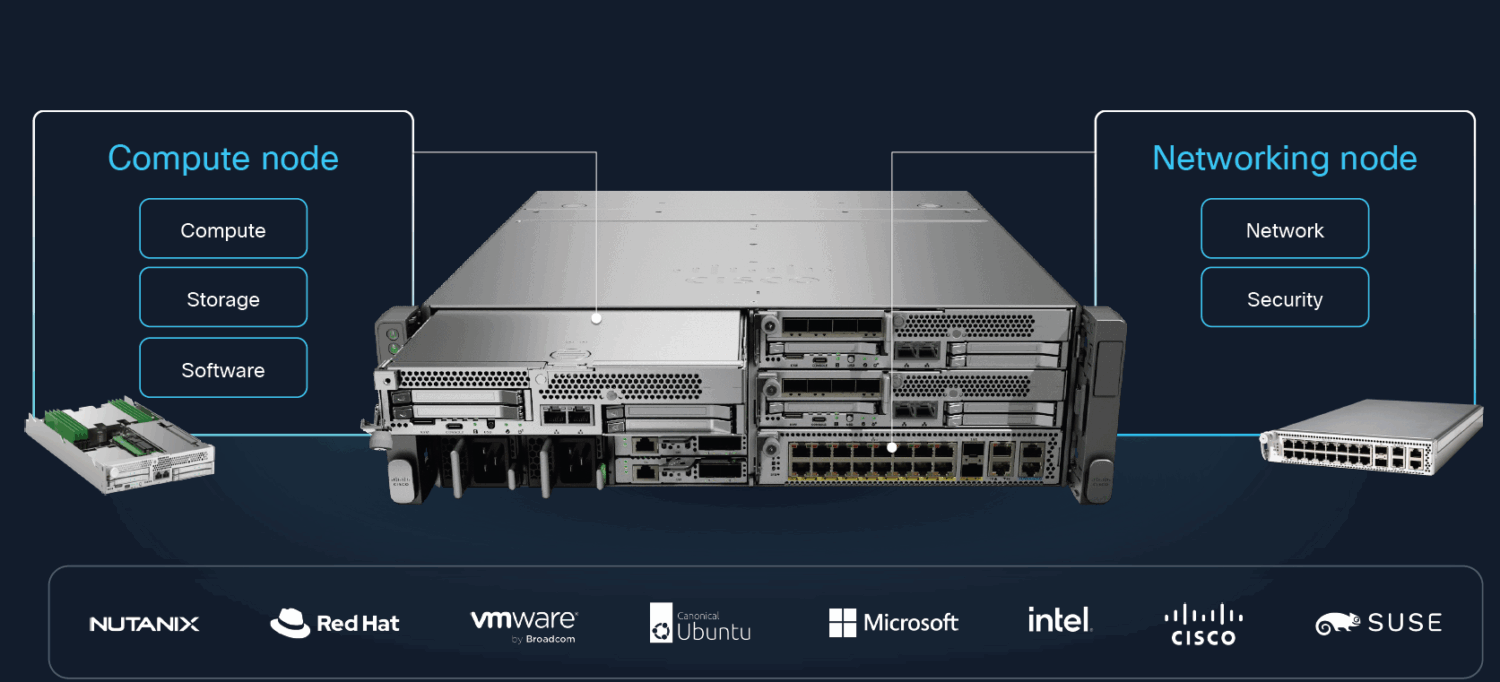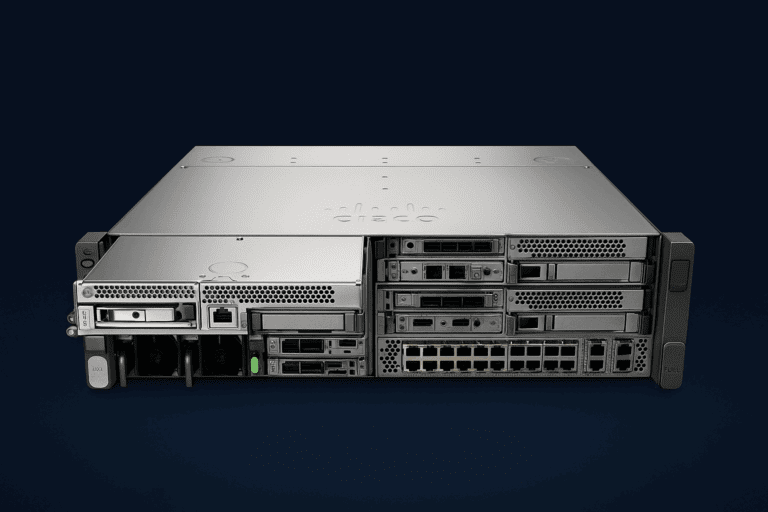Cisco has set a clear course in recent years. It wants to offer as many components of hybrid environments as possible as more or less turnkey full-stack solutions. Last year, there were AI PODs for the data center, and earlier this year, Unified Branch for connecting branches (satellite offices) to the enterprise network. Today, Unified Edge is added to the mix. This should make the power of the data center available at the edge, for (future) AI workloads, but also for other compute purposes.
Ahead of the Cisco Partner Summit, where Cisco is announcing Unified Edge, we spoke with Jeremy Foster, SVP and GM at Cisco and responsible for the company’s compute portfolio. Until last year, we didn’t hear much from that corner of Cisco, but that has now completely changed. The AI PODs we mentioned in the introduction, but also the deep integration with Nvidia, have made this possible.
According to Foster, the edge is an area of IT infrastructure that presents all kinds of challenges: “There are often multiple layers of management, there is a lack of expertise, and it often becomes very expensive.” The edge is a fragmented environment where many changing priorities have also created a lot of so-called drift, he continues. In other words, because priorities have shifted over the years, there has been a lot of inconsistency in the infrastructure. That makes it no easy task to manage this properly, especially when it has to be done on a large scale.
Cisco Unified Edge
To solve the above problems, Cisco is today introducing Unified Edge. This is not just a hodgepodge of Cisco hardware, Foster emphasizes. Cisco has really put a lot of time into developing this. Of course, it has to be done right. If, as a customer, you opt for a certain degree of lock-in by purchasing a complete edge stack from a single supplier, it must at least function excellently.
At this point, there are no specific model numbers for Unified Edge. There are not yet any specific versions that you can purchase off the shelf. Today marks the launch of the Unified Edge chassis, which will be available for order now, and will ship before the end of the year. That chassis can accommodate up to five servers, each equipped with an Intel Xeon 6 SoC. So it’s all very modular. The servers themselves also offer the necessary options. There is a PCIe slot available where you can insert a GPU. According to Foster, an Nvidia L4 fits in easily. You can also add more storage here if necessary.

It is also worth noting that there is considerable cross-pollination between Unified Edge and Unified Branch, which Cisco announced earlier this year. Cisco has made the new 8200 Secure Router compatible with this chassis. This makes Unified Edge an extension of Unified Branch. This is logical, as these two stacks will generally be located in largely the same environments. By adding this Secure Router, Cisco also adds a lot of extra security to Unified Edge.
Unified Edge is powerful, much more powerful than what you could deploy at the edge with traditional Hyperconverged Infrastructure (HCI), for example. For example, 50G of bandwidth is available for each server in the chassis’ backplane. The aforementioned Secure Router also makes Unified Edge converged infrastructure a fundamentally different beast than HCI was and is. You could say that Unified Edge brings the data center to the edge, not just a pale imitation of it.
AI as a hook
In its external communications, Cisco, and therefore Foster, use AI as a reason why Unified Edge was developed. As more and heavier AI workloads emerge that, for whatever reason, need to be run at the edge, this will certainly be an important reason for customers (and ISVs and partners) to roll out Unified Edge.
However, when we ask Foster whether Unified Edge is really all about AI, he replies that this is one of the use cases for which Cisco built it. However, he also states that Unified Edge is an “open system for edge use cases.” That could be AI, but it doesn’t necessarily have to be. It could also be a mix of workloads. The design of the servers, which rely heavily on Intel’s Xeon 6 SoC, also indicates that it is about more than just AI. Dedicated GPUs are optional.
The fact that GPUs are (currently) optional with Unified Edge probably also has to do with the lack of a reference design for the edge from Nvidia. Unified Edge may not be the best platform for that anyway. For that, we would be better off looking at the AI PODs that Cisco announced last year at the Partner Summit. Once such a design is available, we can already predict what will happen. There will also be an AI POD for the edge. Foster admits as much, by the way.
Modularity and Intersight for simplicity and scalability
One of the interesting aspects for us when looking at practical applications is the modularity of Unified Edge. To put it somewhat bluntly, the specific hardware in the chassis does not matter much for its management and maintenance. You can easily pull out a server without causing any major problems. This makes the whole thing very easy to maintain, says Foster.
The main reason that “physical hardware doesn’t matter” for Unified Edge, in Foster’s words, is that all the logic is located elsewhere. That “elsewhere” is Intersight. Cisco has been using this cloud-based management platform since 2017 to manage large UCS environments in (large) data centers. It is now adding Unified Edge to this. Adding Unified Edge to a customer’s management environment is not complicated, we hear from Foster. You connect to it via NFC, after which the chassis itself connects to the cloud.
The fact that we are dealing with software-defined compute here also means that Unified Edge scales easily. “UCS doesn’t care about form factor,” Foster states unequivocally. “We treat everything the same in Intersight,” he continues. He emphasizes that Intersight has already more than earned its spurs. It manages millions of servers worldwide. The only thing that is different with Unified Edge is that it more or less turns the ratios upside down. Whereas data centers in a single location manage a large number of servers, Unified Edge has many different locations with fewer servers.
Cisco continues to build on its full-stack offering
All in all, today’s announcement of Cisco Unified Edge is the next step in the full-stack, deep integration with which it wants to entice customers to go all-in on Cisco. What customers run on it, whether it’s Nutanix or Red Hat, doesn’t really matter to Cisco. From a commercial point of view, this is of course very interesting for Cisco. After all, it will ultimately generate more revenue for the company. The same applies to the launch of AI POD and Unified Branch.
This approach is also definitely interesting for partners and ISVs. After all, they are struggling with all the problems we mentioned above when it comes to the edge. With Unified Edge, they can specialize in a single stack and, if all goes well, better serve their customers. Because less management is required and therefore less time needs to be invested, margins could increase. That is always welcome for this part of the chain.
It is always dangerous to promise customers too many benefits when suppliers of Cisco’s stature come up with fully integrated solutions. The cynic in us sees it primarily as something that benefits them and their partners. Still, you cannot deny that purchasing well-integrated stacks also has advantages for customers, especially if you can ultimately run whatever you want on them. After all, costs should go down and there should be less downtime and other problems. The bottom line is that customers can spend more time doing what they want to do, namely running a business that performs well in the market. Whether this will actually be the case in practice remains to be seen.
Availability
As mentioned above, the Unified Edge chassis is available to order now and will ship before the end of the year. The network component of Unified Edge will follow about six months later, according to Foster. This is undoubtedly due to the fact that the 8200 Series Secure Router is brand new and has only been available for order since this quarter. The customized version that Cisco is putting into Unified Edge will follow a little later.
Now that we are talking about Unified Branch with the 8200 Series Secure Router, we would like to take this opportunity to make link to a comprehensive story that we wrote about that solution. If you would like to know more about AI PODs, please follow this link.
